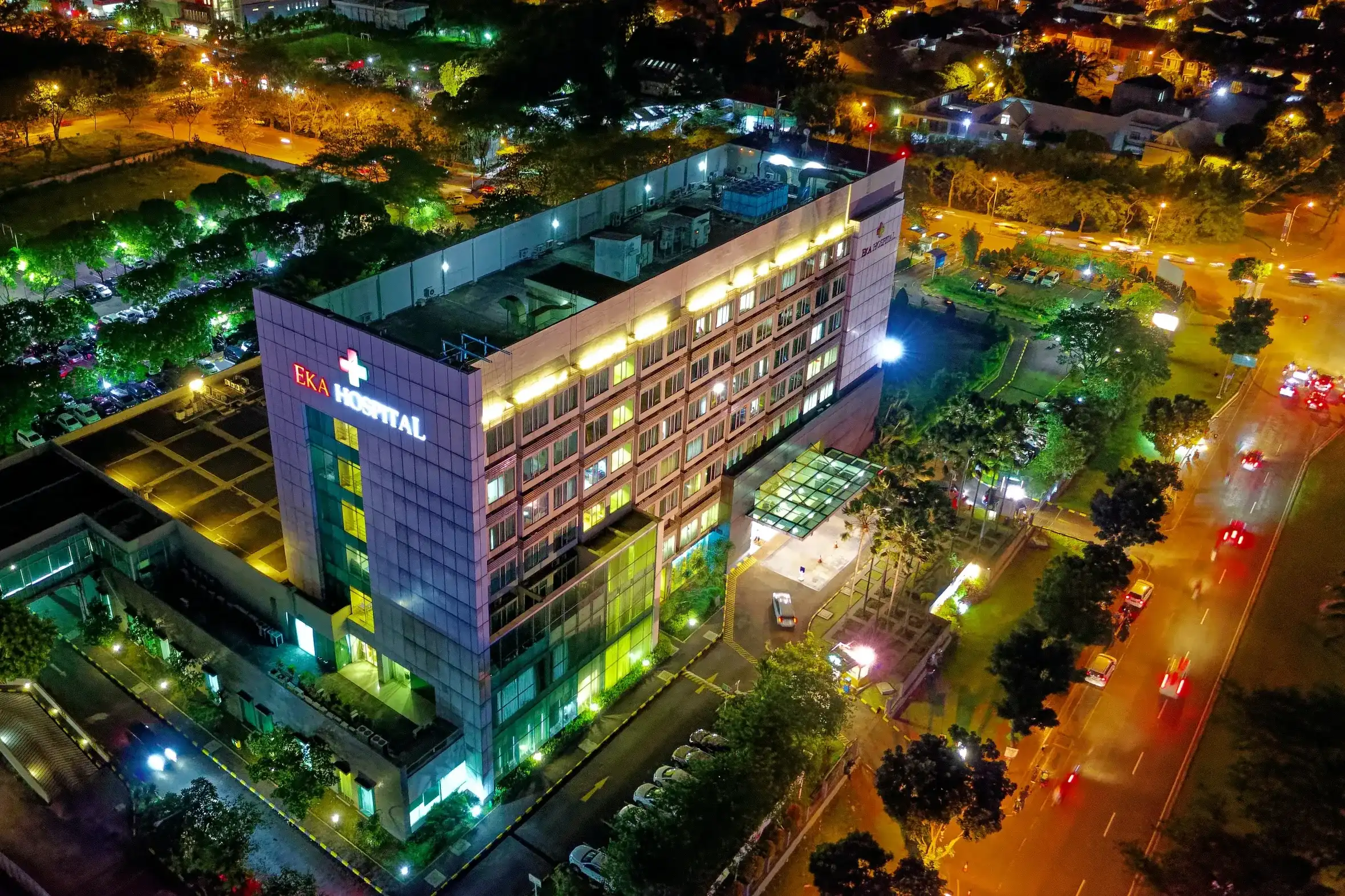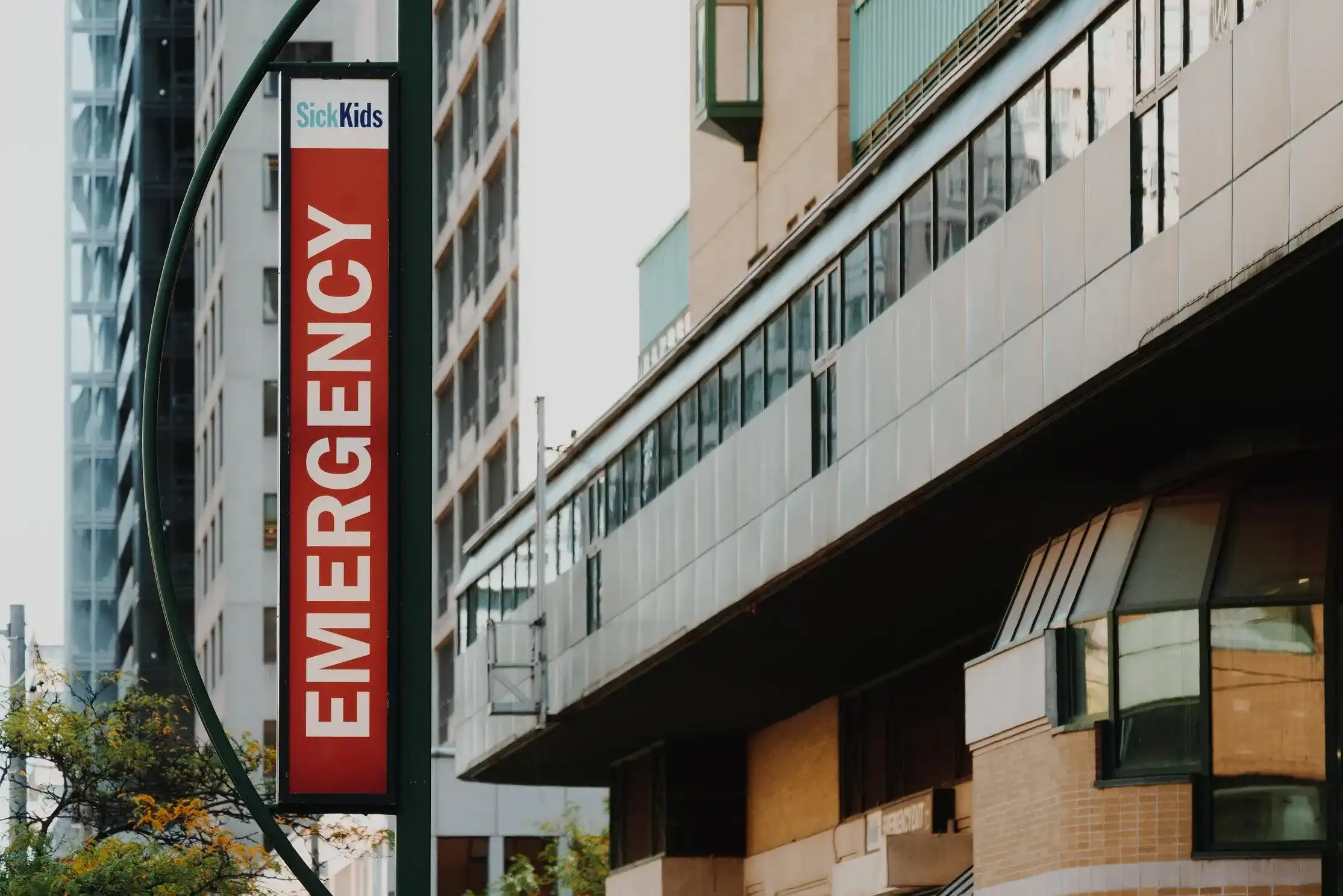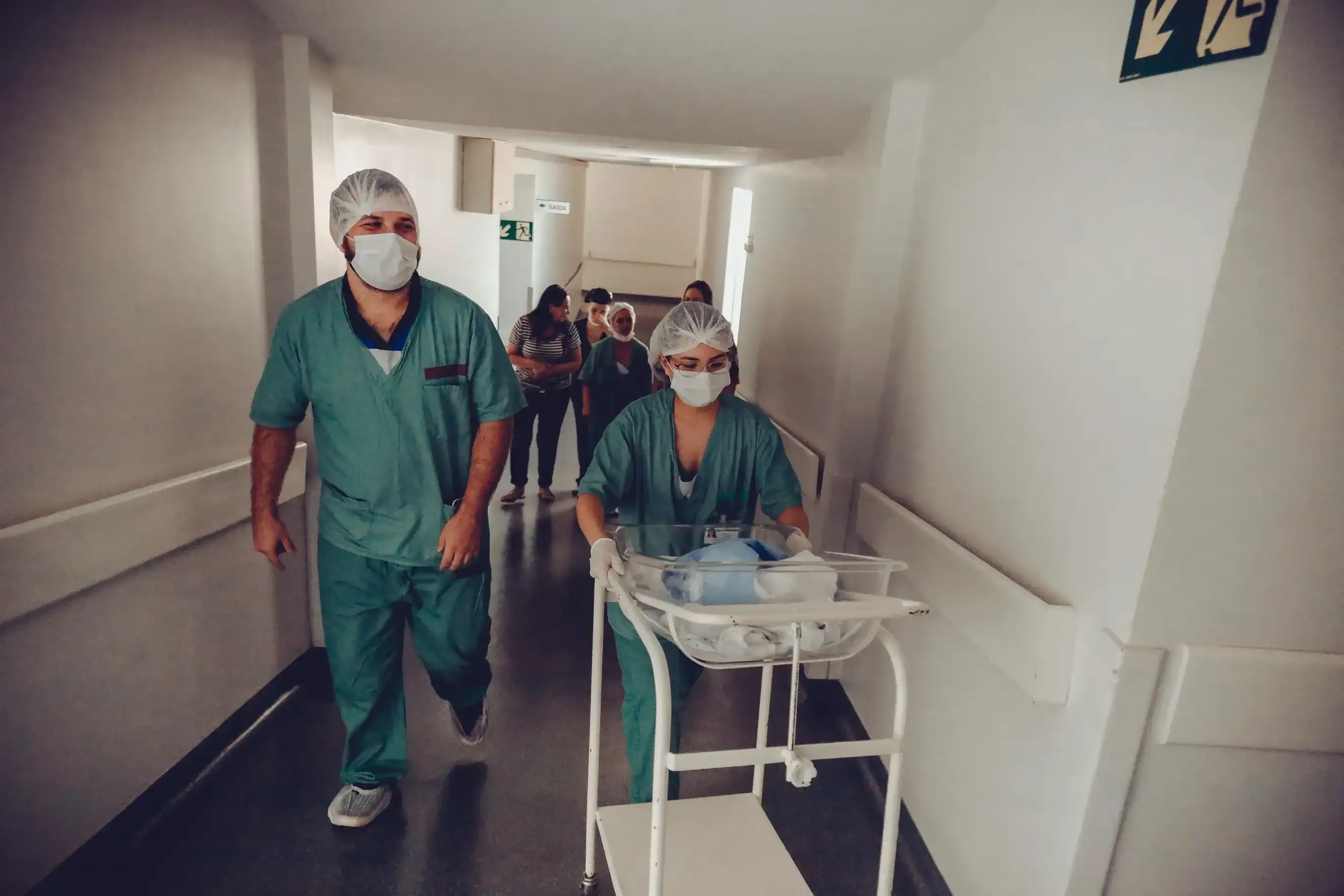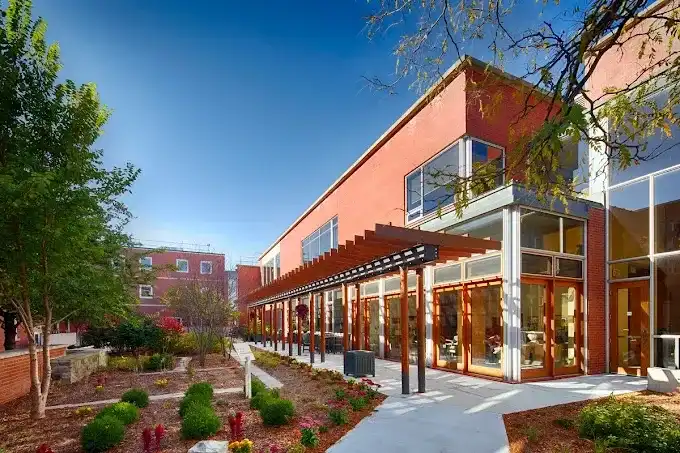Start Here
Indoor maps in hospitals provide many key benefits including managing traffic flow and social distancing, enabling indoor-outdoor navigation from parking to destinations inside, providing wayfinding for patients and staff with accessibility features, offering interactive kiosks with QR codes, creating personalized maps for different visitors, improving patient experience and reducing no-shows through appointment alerts, minimizing staff interruptions by giving directions, optimizing productivity through asset tracking of medical equipment, and increasing safety through emergency evacuation procedures.
Hospitals are known to have the latest and most upscale technology in order to attend to the sick in the best way possible and create an enhanced patient experience. Along with medical and research-related technology, hospitals can benefit from indoor mapping solutions to make their venues more efficient and allow visitors to navigate through the healthcare facility seamlessly.
16 Benefits to Using Indoor Maps in Hospitals
Manage traffic
An indoor mapping solution can be used to control traffic flow in a hospital. Hospitals can use indoor mapping technology to assess the location of amenities and the routes provided to their location. This can reduce crowded areas and help improve the layout of indoor spaces. An indoor navigation solution can also help ensure social distancing regulations are met as the mapping platform can be used to restrict access to certain areas and reroute visitors away from halls or stairwells that are too narrow to meet indoor space requirements.
Indoor to outdoor navigation
Indoor mapping technology provides an end-to-end navigation experience for patients and visitors. Users can be assisted with turn-by-turn directions from the moment they park their cars, directly to their desired destination within the building. Indoor to outdoor navigation systems can enhance the patient experience by checking occupancy levels of parking lots and directing users to the most convenient location in regards to their desired destination within the building. Visitors can pay for parking through their devices and save time, no longer needing to search for scattered parking meters.
Wayfinding for patients and staff
Dealing with illness can cause mental and emotional stress, and a hospital's complex layout can add to this stress by creating frustration for visitors and patients. Wayfinding technology can help minimize anxiety levels by allowing visitors to easily navigate through the venue and find the department or room they are looking for. Staff can also benefit from an indoor wayfinding solution by using the shortest route mapped out for them. Healthcare professionals can follow a path that is efficient and fast, creating a productive work environment. Hospitals can use indoor mapping software to create unique employee and visitor maps that have access to different areas. For example, an employee map could path a route that uses employee-only hallways for a faster travel time.

Accessibility
The most effective indoor and outdoor navigation systems offer Accessibility Mode which accommodates individuals who are bound to a wheelchair or even hospital employees carrying large pieces of equipment that require an elevator. Location technology can assist with accessibility by providing routes that avoid stairs and instead lead users to a path that prioritizes elevators and accessible hallways. Hospitals can also implement Digital Directories or mobile wayfinding applications with voice commands to assist any patients who might have a visual impairment. Some indoor mapping solutions, such as Mappedin's, can also account for multi-lingual users by providing many languages so that all individuals can easily use the system.
Interactive kiosk and digital signage
An interactive kiosk placed at the hospital entrance and other key points of interest help to ensure visitors can get the directions they need as soon as they enter the building. Kiosks allow for a seamless digital wayfinding experience across all platforms. Users can search for a location on the kiosk to visualize it on a big screen, and then scan a QR code to continue following the directions on their mobile device in real-time. Digital Directories can even be used for patient check-ins and registration to create a faster and more efficient visit to the hospital. These interactive kiosks can provide other useful information such as visiting hours or department phone numbers.
Personalized maps
Custom map experiences can be essential in hospitals. A hospital app can allow hospital administrators to sync data into the indoor navigation system to create a personalized wayfinding experience. 3D mapping technologies can customize a patient's path to avoid employee-only hallways or areas such as surgery rooms, instead leading patients to the check-in desk of the correct department. Hospital employees can also integrate patient data in order to send push notifications about an upcoming medical appointment with turn-by-turn directions to the designated room. This can help avoid late arrivals that result in hospital delays.
Improve patient and guest experience
Creating an enhanced experience at hospitals can help guests and patients minimize stress levels when visiting a large, complex venue. Hospitals can help patients and guests have an elevated experience by ensuring an indoor navigation solution is put in place to keep patients and guests safe while monitoring traffic flow.
For some individuals, travelling to the hospital can be difficult due to remote areas, not having motorized transportation and other obstacles that can occur. These challenges make it crucial for hospitals to provide an easy wayfinding experience within the building to minimize difficulties as much as possible.

Directions sharing
Direction sharing can be useful in hospitals, as patients can leverage indoor positioning systems to send their exact location while inside the building. Visitors can then easily navigate their way through the hospital using indoor mapping technology, making for a seamless and easy visitor experience. Directions sharing can be used by healthcare professionals to send a patient's appointment location details and turn-by-turn directions to their mobile device, ensuring patients always have directions to their desired destination.
Reduce patient no-shows
By implementing indoor mapping systems that showcase appointment times, patients can show up on time and hospitals can minimize the amount of late arrivals and no-shows that occur. Indoor maps can send alerts to patients notifying them of their appointment time while providing turn-by-turn directions to get to the area. This in turn reduces lost revenue from patients missing appointments because they were unable to locate the correct room. Delays can also be minimized as patients can plan their trip with an estimated travel time in mind. Patients can understand where they need to park and enter the building which can help them reach the correct department on time, creating a smooth-running hospital with little to no wait times.

Reduce staff interruptions
With indoor navigation systems, patients and visitors can rely on location technology to provide them with directions, rather than hospital employees or volunteers. This can reduce staff interruptions so that healthcare employees can spend more time doing their jobs and helping people physically, rather than providing directions.
A recent Deloitte report showed that medical staff spends on average 4,500 hours in giving directions every year. That is a considerable amount of time spent just on giving directions. When patients become disoriented and panicked, they typically ask the hospital staff for help. This reduces productivity and can also cause stress among staff members. Digital solutions can make getting directions easy for patients and visitors while allowing healthcare professionals to focus on their work.
Reduce costs
Along with losing revenue from patient no-shows, hospital staff regularly waste valuable hours searching for necessary hospital equipment like IV poles and wheelchairs. These types of equipment are often misplaced around the hospital and both time and money can be wasted searching for them. These types of equipment can even be permanently lost or stolen, creating a high cost in replacement fees. Asset tracking technology can reduce costs by ensuring equipment allocation is being done accordingly while keeping track of all items within the hospital.

Optimize productivity
Productivity in a hospital is extremely important, as employees want to help as many people as possible. With indoor navigation systems, employees can focus on their core duties and improve productivity by following the fastest routes possible, making for an efficient work environment. Employees can use these routes to get to patients and equipment quicker, allowing for healthcare workers to take on a higher patient load. Indoor positioning systems can also implement staff tracking to increase productivity. This can improve response times as medical staff can find the closest employee to help with a task when needed.
Medical equipment tracking
Medical equipment tracking makes it easy for staff to locate equipment and easily access medical assets to assist patients. Management teams can use an asset tracking solution to visualize equipment on the indoor map and allocate resources accordingly and efficiently. This can ensure nothing goes missing while saving employees' time searching for items. Indoor maps help employees stop searching and start finding with medical equipment tracking.

Understand traffic flow and guest movement patterns
Indoor maps can use heat maps to colour code certain wings and sections of the hospital, helping to visualize traffic flow within the healthcare facility. Management teams can use these digital indoor maps to create a positive impact on traffic flow and guest movement patterns. Hospitals can use advanced positioning technology to assess which areas are driving the most foot traffic and also view missed searches of what visitors are looking for, for example, a vending machine or a coffee station. This can make hospitals an easy place for navigation, which can provide a sense of ease for those struggling with high frustration levels when visiting a loved one in the hospital.
Simplify maintenance challenges
Indoor maps can help keep equipment and facilities in good working condition. Digital indoor maps can allow maintenance teams to oversee all operations in a hospital and be notified when an area requires maintenance. Maintenance teams can see the certain items that require servicing rather than having to clean or replace items in the building all at once if deemed unnecessary. Indoor maps can display floor plans as well as maintenance plans to keep on top of necessary maintenance requirements like pipe cleaning, equipment replacements, and more. Hospital can use a third party platform to send maintenance teams alerts if something is broken, allowing staff to keep on top of equipment and stay "in the know" at all times.
Increase hospital safety and security
Indoor maps can be used to keep all individuals safe when entering the hospital. In the event of an emergency, users can be notified of exit procedures with turn-by-turn directions to follow. This can relieve stress levels by avoiding people becoming panicked and disoriented when attempting to find exits. Indoor positioning technology can be used for security teams to ensure everyone has exited the building safely and no one has been left behind.

Hospitals are continuing to grow each and every day. To learn more about how indoor mapping can minimize the complexity of venues in the healthcare sector, increase employee productivity, and improve the overall patient experience, contact us to book a demo today.
Tagged In
Share



